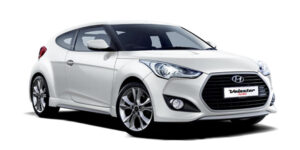Hyundai Veloster Coolant Type
Select Your Model Year...
Choose the appropriate model year for the Hyundai Veloster you are trying to find the coolant type for from the list below.
Hyundai Veloster

- Manufacturer: Hyundai
- Data Source: Owner's Manual
You can find 8 different trims for the Hyundai Veloster and their corresponding recommended coolant type.
The years available stretch from 2012 through to 2024 and to view the coolant type and capacity you just click to expand.
The Veloster first made its debut in 2011. Since then, the sport hatchback remained on the market until its discontinuation in 2022. During its time on the market, only two generations were released. The latest of these was unveiled in 2018.
It was clear right from the beginning that the Korean carmaker wanted to attempt something different with the model.
Despite having rather an unusual styling, it also featured asymmetrical doors. While there was a single large door on the driver side, the passenger side featured two smaller doors.
Competition for the interesting Veloster typically came from the Volkswagen Scirocco, Honda CR-Z, Renault Megane, and Opel/Vauxhall Astra GTC.
There were five trim levels offered for the Hyundai hatchback. These consist of the base, Premium, Turbo, Turbo R-Spec, and finally the Turbo Ultimate. There was also the high-performance Veloster N, which arrived on the markets in 2019.
Hyundai offered only petrol engines for the model in an attempt to offer only the best performance. For both generations, these engines ranged from a 1.4 L inline-4 to a 2.0 L inline-4, although the first-gen model consisted only of various 1.6 L inline-4s.
These were mated with various transmission options. There was the standard 6-speed manual, as well as other options like various 7-speed and 8-speed automatic and dual-clutch options.
Hyundai announced in 2020 that all models apart from the Veloster N would be retired. However, it was later announced that even the high-performance variant would be discontinued in 2023.
This is mainly due to poor sales and the continuing popularity of crossover models like the Hyundai Kona.



